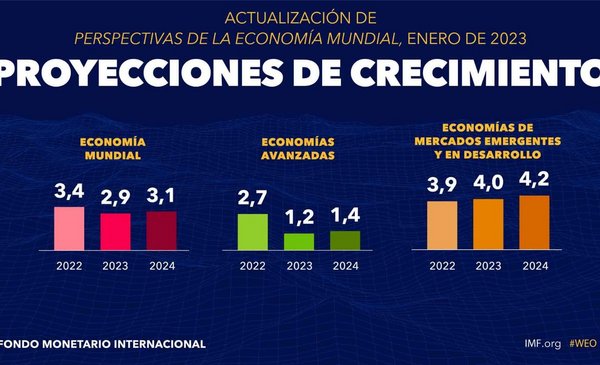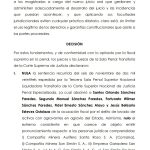The International Monetary Fund (IMF) projects that the world economy will grow only 2.9% in 2023, before rebounding to 3.1% in 2024. The forecast for this year is 0.2 percentage points higher than that predicted last October, but lower than the historical average (2000–2019) of 3.8%.
The World Economic Outlook report released on Tuesday points out that the low growth in 2023 is due to the increase in central bank rates to combat inflation ––especially in advanced economies–– as well as the war in Ukraine .
As explained, the rapid spread of covid-19 in China slowed down growth in 2022 (an expansion of 3.4%) is estimated, but the recent reopening has “cleared” the path for a faster-than-anticipated recovery.
By regions
For advanced economies, the IMF projects growth to fall sharply from 2.7% in 2022 to 1.2% in 2023, before rebounding to 1.4% in 2024with a downward revision of 0.2 percentage points in 2024. Growth in around 90% of advanced economies is projected to slow in 2023, it explains.
On the other hand, for emerging market and developing economies, growth is projected to increase moderately, from 3.9% in 2022 to 4% in 2023, and 4.2% in 2024. This implies an upward revision of 0 .3 percentage points for 2023 and a downward one of 0.1 percentage points for 2024. Approximately half of emerging market and developing economies show lower growth in 2023 than in 2022.
Inflation
In about 84% of countries, the headline level of inflation is expected to be lower in 2023 than in 2022. Projections point to world inflation falling from 8.8% in 2022 (annual average) to 6.6% in 2023, and to 4.3% in 2024, levels still higher than those observed before the pandemic (2017–19 ) of around 3.5%.
“The projected disinflation is partly due to lower international prices for fuels and non-fuel commodities due to weaker global demand. Also the tightening of monetary policy that exerts a cooling effect on core inflation, which is expected to fall globally from 6.9% in the fourth quarter of 2022 (year-on-year) to 4.5% in the fourth quarter of 2023”, says the report.
Risk to the outlook
Elsewhere in the report, the IMF noted that the balance of risks remains tilted to the downside.
On this point, The report says that among the upside risks, a stronger boost from pent-up demand in many economies or a faster drop in inflation are plausible.
Among the downside risks, he mentions the stagnation of China’s recovery and the escalation of the war in Ukraine.

















